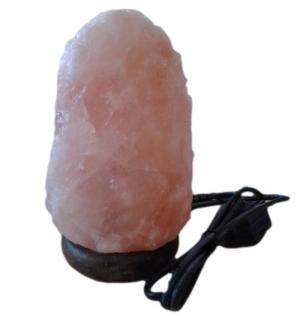


Unusual and attractive, salt lamps are unique decoration pieces, hand-carved from larger salt crystals that come from the deep of the Himalayan mountains.
The Himalayan mountain range is home to the world’s highest peaks, and it crosses six countries: India, China (including Tibet) Bhutan, Nepal, Afghanistan and Pakistan. Its highest peak, Mount Everest, is 8848 metres high and it has attracted adventurers, nature lovers and mountain climbers from all over the world.
About 250 million years ago, the earth’s plates movement turned a vast part of the ocean into the imposing territory that we know today as the Himalayas. Then, sea salt remained buried 600 metres deep. After millions of years, extrusion at high temperature and contact with rich mineral deposits originated the Himalayan crystal salt.
After their extraction, salt crystals are patiently carved into lamps by local artisains. So, each lamp is unique and different from the other. Imperfections and impurities as well as differences in colour and opacity make each lamp unique.
When it’s turned on, the light projected from the lamp gives it a red tone that doesn’t hurt the eyes and which can be used as a night light. Salt lamps can be used in bedrooms, living-rooms, offices, or any other place where you would like to have a welcoming and cosy environment and beautiful and soft light. However, damp places should be avoided.
Good lamps have light dimmers so that you can create the ideal environment for you.
Salt lamps are water-soluble, so, if it they are placed in a wet or damp environment, they may start to melt. You should switch the lamp on regularly, so that it can absorb humidity and keep the structure of the salt crystal. If the lamp surface is a little damp, you should wipe it with a dry cloth and go on using the lamp as usual. If the lamp isn’t switched on regularly it may start to melt. The liquid accumulated beneath the lamp may damage its base or wherever it is placed, because salt is naturally corrosive. The best way to prevent this is to ensure that the lamp is switched on regularly, so that you can benefit from its beauty and the cosy environment that is naturally created by its light.
Insert date: 2014-04-28 Last update: 2016-07-14
Comment
![]()
![]()
Authors > Ana Alpande
Ecological alternatives